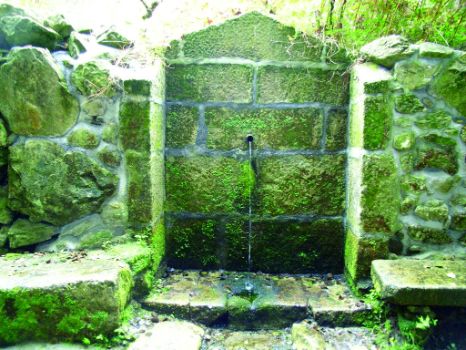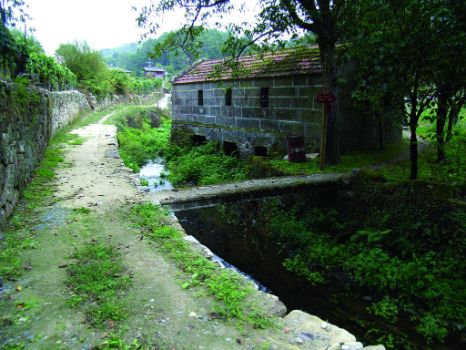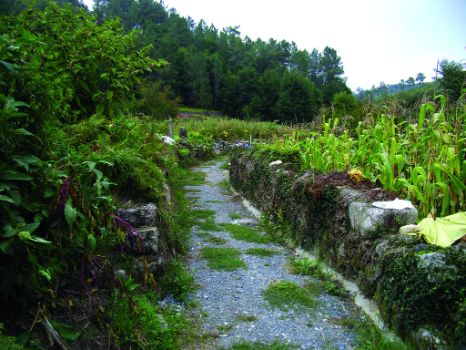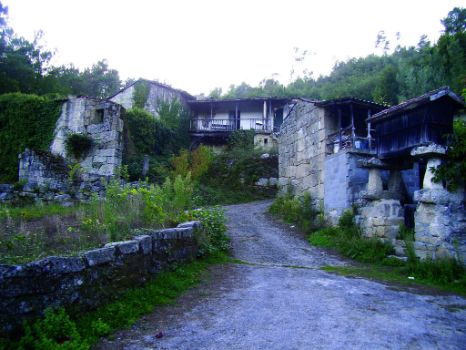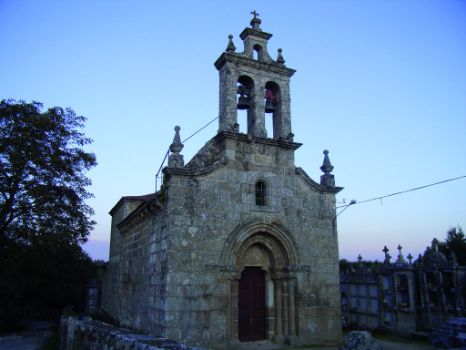Net of Natural
Trails

Dos Arrieiros Nature Trail
Description
Intertwined paths beneath oaks
This Nature Trail puts to good use the many paths that crisscross the landscape of this county, peppered with streams hidden amongst oak trees and lush riparian forests, home to an extraordinary biodiversity.

The route begins at Fonteantiga, a small town in County Carballino (Ourense), whence a gravel track runs through ashes (Fraxinus sp.), chestnuts (Castanea sativa) and alders (Alnus glutinosa that line the Regato do Fondos Brook. Immediately after, there is a fountain of untreated water to the right. The gravel path soon becomes a cobbled road that runs through a lush alder forest, and crosses a stone bridge that gives access to Lodeiro vineyards, next to a hamlet with a chapel.
The route continues through a lush riparian forest along the river to San Fiz de Varón. After passing through the town centre, the route crosses a concrete bridge and turns left onto "Camino de Los Arrieros". After a short stretch along the riverbank, the route crosses a second concrete bridge, next to which is a water mill, and passes through several vegetable gardens to reach the road leading to the town of O Varón.

The route crosses the town's bridge, turns right onto a narrow gravel road, situated between a "hórreo" (granary) and a traditional house, and leaves the town amidst small fields of crops enclosed by stone walls. Further on, the road reaches a crossroads next to a meadow, where it turns again to the right and crosses a stone bridge over the river. It then continues along the left bank to a side-track leading to the town of A Fraga. The path starts to drift away from the river, and heads up a flight of steep stairs through an oak wood, until it reaches the abandoned town of Sona, where the brief climb ends.
At the opposite edge of town, the traveller can choose amongst three possible routes:
To the right, the route leads to Porto de Eguas recreation area. To the left, the route runs past a nearby fountain and continues almost parallel to OU-210 until it reaches a gravel track, where it again turns left towards Partovia recreation area. The route that continues straight ahead at the crossroads leads to another intersection, where it turns left onto a dirt track leading to O Covelo. Past a landfill and three more crossroads, the route continues on level ground until it reaches the town.

Several gravel tracks start in this town. The track to the left leads to the town of Grovas and the River Varón. The one to the right heads towards the church of Partovia, where, once again, there are two alternative routes. The right path leads to Refoxo, and the left to As Caldas.
To make matters more complex, yet another branch of this Nature Trail begins in O Covelo, a gravel path that continues straight ahead, in the shade of oaks. After leaving Penedo recreation area to the left, it continues straight ahead along a paved road towards the nearby town of Mesego. After crossing the river over the bridge, the road begins to climb until it reaches a narrow gravel track to the right leading to the village church.
The route continues ahead, climbing again along a gravel track that goes to Grovas, where it meets the off-shoot road mentioned above that links this village with O Covelo. If one chooses to continue straight ahead, the route reaches a crossroads and continues along a gravel track with a wooden railing until it meets a paved road that leads to A Fraga. A flight of stairs connects this track with the path leading to Fonteantiga, where this loop route ends.
Sites of interest
Profile
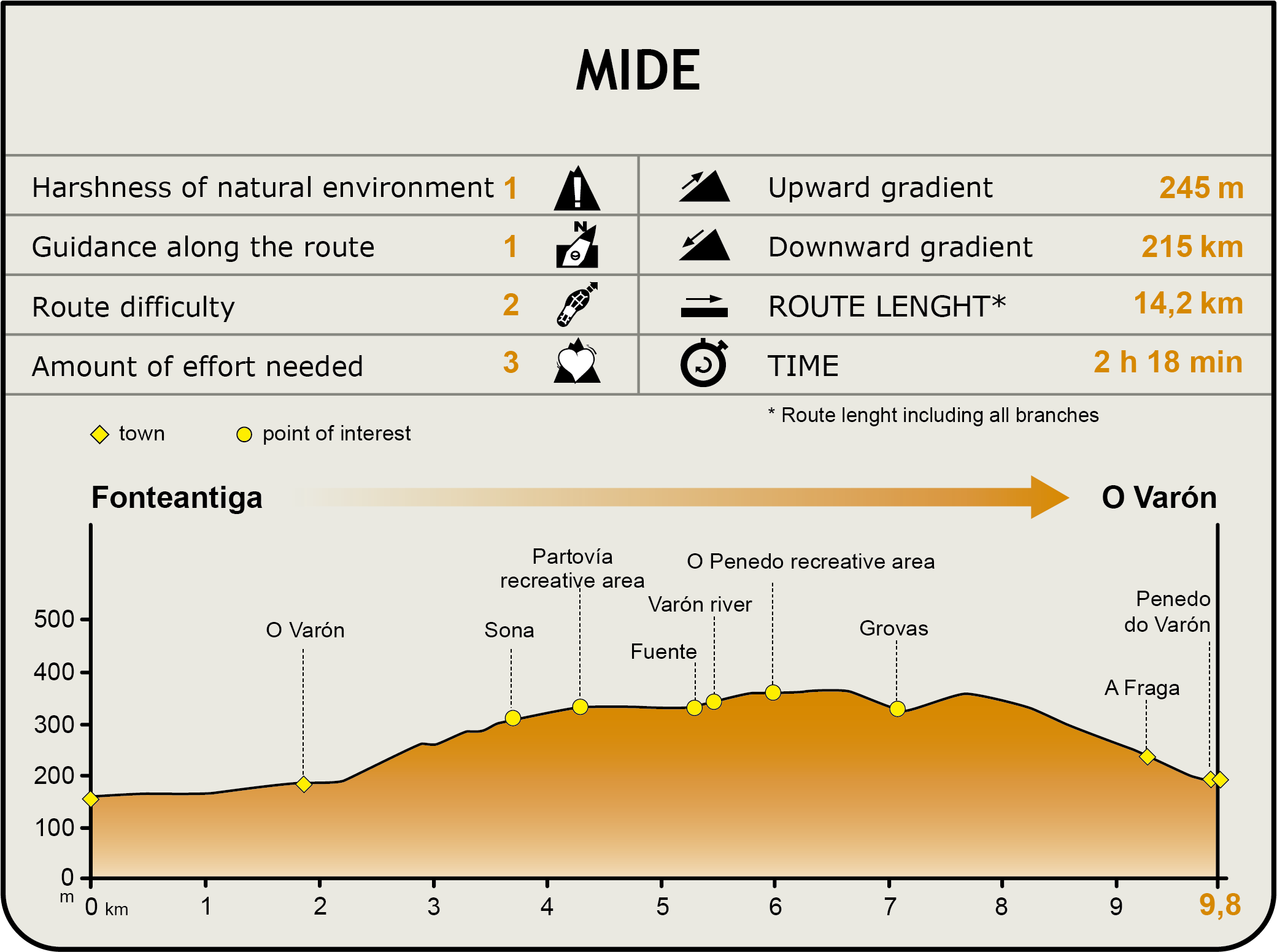
Highlights
Further information
O Carballiño
The church of Vera Cruz in O Carballiño, Ourense, is locally known as “the new church” to differentiate it from theo ther church in the town.
With construction works starting in the 1940s, its unusal architecture leaves no one indifferent, since it displays a mix of architectural and sculpture styles: Byzantine, PreRomanesque, Romanesque and Gothic, which makes this church an original, unconventional one.
The church was a design of Antonio Palacios, a famous architec and an O Porriño native who died before seeing the church completed. The church’s impressive tower, over 60 metres high, and the more than 6,000 arches that are part of its structure, are escpecially noteworthy.
The other main tourist atraction of O Carballiño is that is a spa town. Its mineral springs, known since Roman times, have led to the creation of its two main spa resorts: Caldas de Partovia and the Gran Balneario. The latter opened in 1816 and is located by the River Arenteiro. Its premises include a famous garden with century-old trees.



